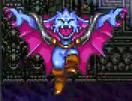I think that the best way to Make a game is the. "layered approch."
With this approch, you can minimize the stress of tracking your elements and make better and more complex games with ease. This not only is a discussion, but a bit of a FAQ, I guess.
First off, you should think of the basic premise of the game that you wish to create.
Examples:
-Ogre kidnaps V.I.P. -> attempt rescue
-Crystal that controlls reality is loosing power -> find out why -> if possible reverse effects
-Legendary item is learnt about -> try to find it
...Etc. (there are many more)
Once you figure that out, it is time to sit down and flesh out your idea. I like to do this as I play around in the system data, creating spells, monsters and what-not. I find that the game tends to "gel" while I'm doing this, however, your personal style may dictate other ways of doing this. Drawing, and listening to music tend to get my inspireational juices flowing, so you could try that. You could also try going outside for a walk, mixing a phat beat (if you are into that sort of thing), or bounce your ideas off of a friend (like the rest of this forum, we're cool like that.

).
However you get that idea fleshed out work on your System data and get that finished (for RM 2 and 3 users, this is Monster, VFX, world and dungeon map, and character creation).
Now that you have all the elements that will make up your game begin scripting your story. Keep it basic. Remember all you want to do first is script THE STORY. If there is a feature that you wish to add, do so later. The idea at this point is to make your game bare bones playable from start to finish. This process can be broken down even more by sub deviding (in you mind at least) the dfferent "sections" of the game. For instance, suppose the game starts and you have to go to the "cave of doom" for what ever reason. All the events leading up to that would be one section of your game. Now suppose that once you have had the player plumb the depths of said doom filled cave, they discover a larger mystery that flings the player on to another area. Any thing that leads up to that
new aventure is another section. So on and so on.
The upshot of this is that you only focus on perfecting a small area of your game at one time, and as such, can realy focus on the small details with out worring about the larger picture. As always, BARE BONES (for now).
Ok. so you have written the basic story of your game, and made sure that it WORKS. At this point, you can release it as a demo if you wish, as it is only bare bones and it will whet your audiences appetite for the full version. Another way to do this is to flesh out the first section of your game, then delete any unnessisary elements, then save the game (TO A DIFFERENT MEMORY CARD(s)!). you can release THAT as a demo as well, if you don't want to give up all the secrets of your game. Eather way, now you can go back over an polish up the game. At this point the features are all up to you, however, subquests are nice additions, as are simple CBS's (In RM1, they aren't as hard to make as you would expect!). There are also a few nice graphical things you can do, like add ambiance to certain areas like fog for swamps, or "random" "earthquakes" for mountainus reagions, or simple sound effects that realy bring your game to life. Now is also to go back and check for spelling errors and do general debugging.
So! lets recap:
Game idea -> Expansion of idea -> World & Character creation -> Script story -> Debug -> (Add features then) Release Demo -> Add major sub-quests -> Add minor sub-quests -> Add optional things (ex., CBS, VFX, and/or SFX, etc.) -> Final release.


 Rank 5: Nimble Thief
Rank 5: Nimble Thief Rank 11: Sexy Black Mage
Rank 11: Sexy Black Mage Rank 2: Eager White Mage
Rank 2: Eager White Mage







